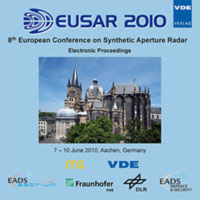Initial ARTINO Radar Experiments
Konferenz: EUSAR 2010 - 8th European Conference on Synthetic Aperture Radar
07.06.2010 - 10.06.2010 in Aachen, Germany
Tagungsband: EUSAR 2010
Seiten: 4Sprache: EnglischTyp: PDF
Persönliche VDE-Mitglieder erhalten auf diesen Artikel 10% Rabatt
Autoren:
Weiß, Matthias; Gilles, Markus (Fraunhofer-FHR, Neuenahrer Straße 20, 53343 Wachtberg, Germany)
Inhalt:
The interest in employing Unmanned Aerial Vehicles (UAVs), which are remotely controlled or self-piloted aircraft flying a pre-programmed flight plan, has increased steadily over the past decades. Usually UAVs are employed for missions that are too dull, too dirty, or too dangerous for manned missions and carry cameras, sensors, communications equipment or other payloads which are used in earth observation, reconnaissance, monitoring, and surveillance missions. Using radar sensors for these applications is due to their all-weather capability. Especially imaging radars possess several benefits over optical systems, as they are not affected by rain, snow, fog, or the time of day. Small unmanned aerial platforms exhibit besides easy transportation to the area of interest and low maintenance cost restriction on weight and volume. When developing sensor payloads for small UAVs these parameters are the predominant design drivers. The final paper will present first radar experiments of the 3D imaging radar system ARTINO (Airborne Radar for Three dimensional Imaging and Nadir Observation), designed as payload for a small UAV. This new type of radar combines a real aperture, realized by a virtual linear array of nadir pointing antennas, and a synthetic aperture, which is spanned by the moving airplane.


